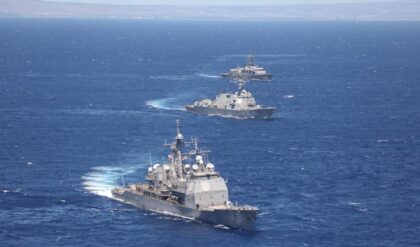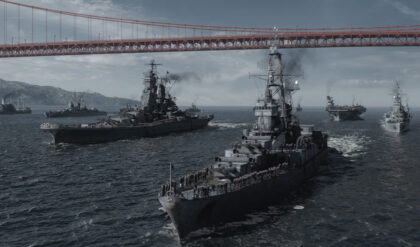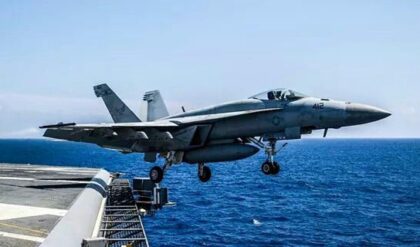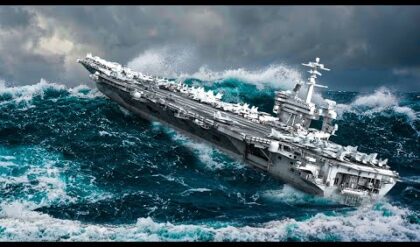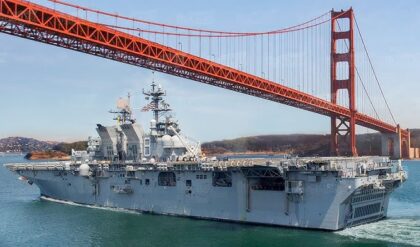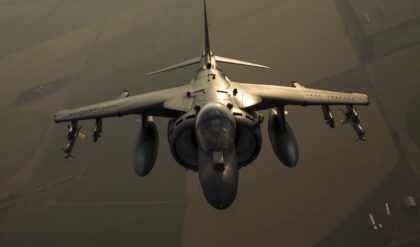The amphibious transport dock ship was attacked last week in the Mandeb Strait.

www.twz.com
Few new details have emerged surrounding the rash of attacks last week on US Navy vessels operating in the tight confines of the southern Red Sea.
However, thanks to a Facebook post by the public affairs folks aboard the USS San Antonio (LPD-17) dated October 13, we now know that the amphibious transport dock ship was targeted in one of the anti-ship missile volleys as it transited through the area.
The post reads:
SAN ANTONIO Family and Friends:
I would like to take a moment to express how proud I am of the men and women of the SAN ANTONIO Team for their exemplary performance during our recent transit through the Bab al-Mandeb strait.
Allow me to reassure you that all of your Sailors and Marines are safe and doing well. All hands had a huge
role in guaranteeing SAN ANTONIO’s safety throughout the transit. Words cannot express how much I appreciate each and every one of your Sailors and Marines.
The transit was challenging and missiles were launched against the USS MASON and USS SAN ANTONIO. Our crew performed flawlessly in the defense of our ship.
Per the Pentagon’s press release we will be ready and respond to any further threat to our ships and commercial traffic, as appropriate, and will continue to maintain freedom of navigation on the high seas.
I am extremely proud to be the Commanding Officer of such an exceptional warship filled with exemplary Sailors and Marines.
The statement was made outside of any other official disclosure that USS San Antonio was involved in the attacks.
Previously, the USS Mason and USS Ponce were the only ships identified as being targeted by anti-ship missiles fired by Houthi rebels from Yemen’s western shores.
Since the ship is not part of small three-ship action group sent to the area following the successful strike of HSV-2 Swift, it seems as if USS Mason was escorting USS San Antonio through the increasingly dangerous waters around the Mandeb Strait.
This would make sense, since LPD-17 class ships only have a RIM-116 Rolling Airframe Missiles and decoys for close-in point defense against aerial threats.
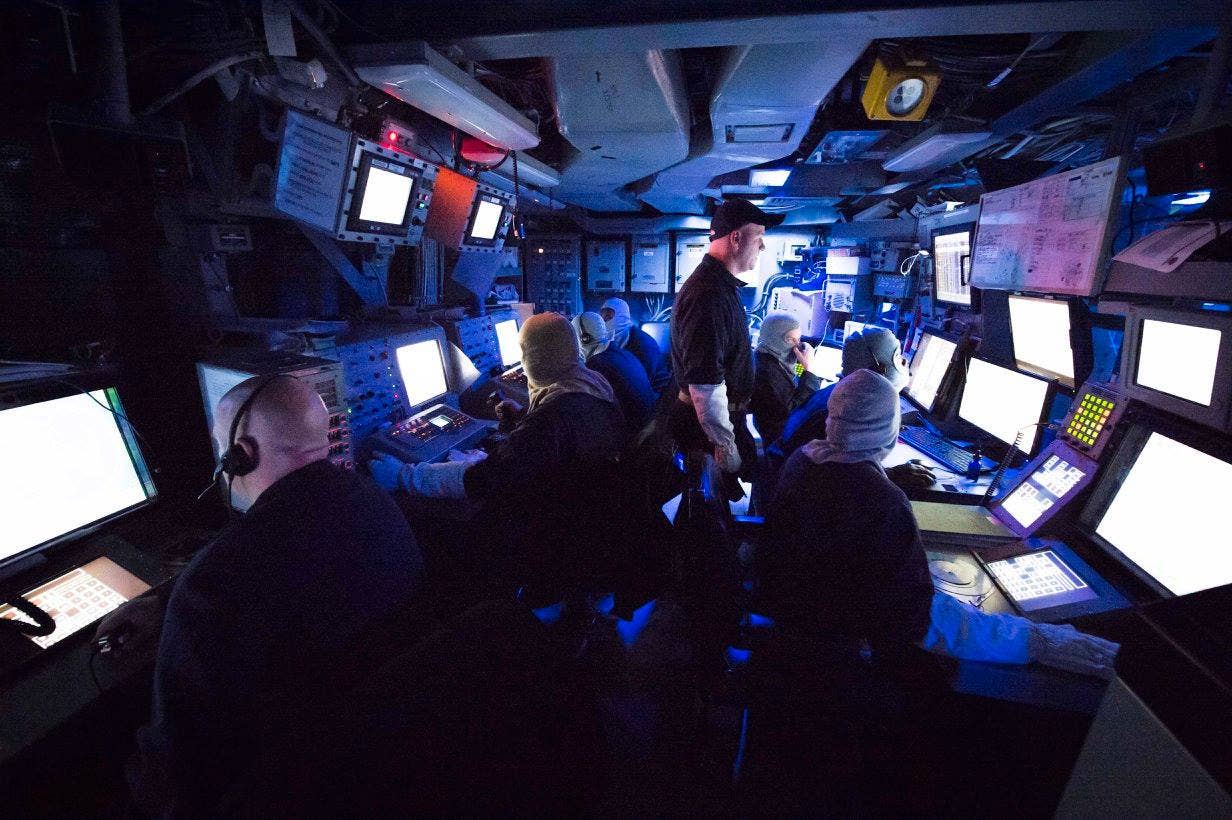
Sailors monitor the USS San Antonio’s defensive systems in the ship’s combat information center. , USN
The San Antonio class was not always envisioned as being so dependent on the Navy’s Aegis combat system equipped destroyers and cruisers for protection.
These ships are like a little militaries in a box, and outside of large scale amphibious operations, they can perform a ton of other missions, from counter-terrorism, to low-intensity warfare, to anti-piracy to disaster relief missions.
The only problem is that when operating in medium- to high-threat environments they are vulnerable to aerial attacks, which don’t always emanate from traditional state actors.
With this in mind, the design originally included two eight-cell Mark 41 vertical launch systems. Each cell can be quad-packed with four RIM-166 Evolved Sea Sparrow Missiles, which would give the ship a credible intermediate range aerial defense without requiring massive upgrades to the ship’s sensor suite.
These cells can also be packed with RGM-109 Tomahawk cruise missiles, giving LPD-17 class ships considerable long-range striking capability.
This could be used to support Marines working deep in enemy territory (likely carried there by the ship’s MV-22 Ospreys) or against any target that the Pentagon wishes to be struck, and would fit with the Navy’s greater strategic goal of distributed lethality.
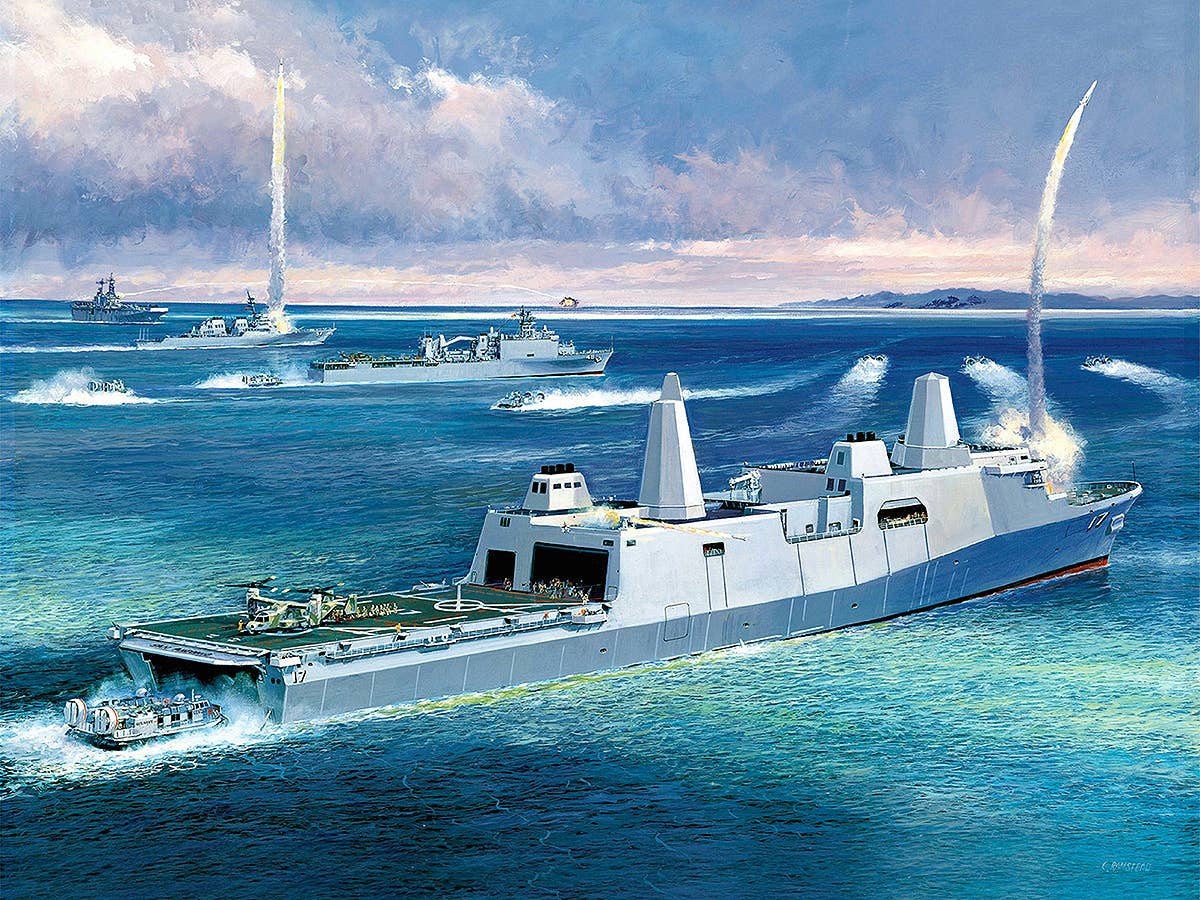
Early concept art of the LPD-17 class in action, including showing its bow mounted Mark 41 VLS in action., USN
When it comes to this concept in relation to the San Antonio class, it means that whenever and wherever a ship of this type is sailing, beyond its traditional amphibious mission, it can be called upon to quickly launch strikes on any targets within a 1,000 mile radius of its location.
This not only greatly increases the ship’s lethality, but it also offers greater utility to the Navy as a whole.
For instance, say a Tomahawk equipped San Antonio class ship were executing anti-piracy operations off the Horn of Africa and a high-value terrorist leader was detected at a certain camp in Somalia, the Navy could look at what ship is nearby and regardless of its mission, it could be called upon to launch a Tomahawk at that target just as a cruiser or destroyer would.
In essence, distributed lethality takes a platform agnostic approach to certain aspects of naval warfare and provides far more combat punch with same amount of active vessels.
Many concepts have been built around evolved versions of the San Antonio class, including a ballistic missile defense ship, as well as installing the Aegis combat system on the next version of the design, dubbed the LX(R).
Yet just making use of the space already designed into existing LPD-17 ships for a VLS system makes great sense as it will not only fit the distributed lethality playbook perfectly, but it will also allow LPD-17 class ships to operate more independently of their already over-tasked destroyer and cruiser counterparts.
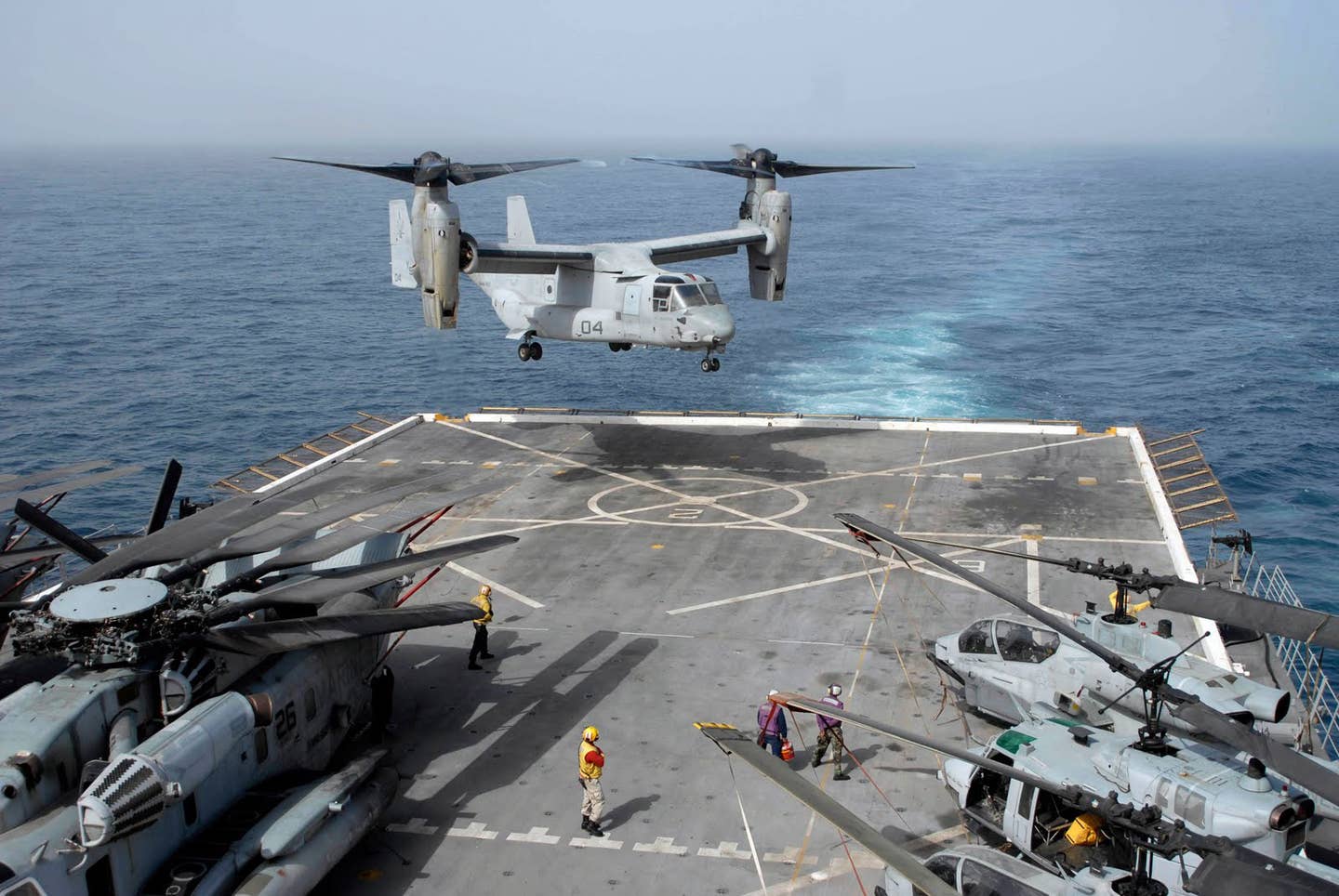
All the USMC’s mainline helicopter force is represented on the deck of an LPD-17 in this shot. These ships are truly “a military in a box.”, USN
Oddly enough, on the same day the message was published regarding attacks made on the USS San Antonio, the Navy admitted that they, along with the USMC, are now actively looking into equipping the class with Mark 41 VLS systems.
Back to the situation in Yemen and the threat posed by Houthi rebel launched anti-ship missiles to ships sailing in the southern Red Sea, a 72 hour ceasefire has been agreed upon by both the Saudi-led coalition that backs the Yemeni government and the Iranian-backed Houthi rebels.
The ceasefire will go into effect Wednesday night and can be extended indefinitely.
Both parties are being pushed to enter direct negotiations for a permanent peace deal.
If this agreement holds, it will hopefully mark an end to anti-ship missile attacks near the critically important Mandeb Strait.
